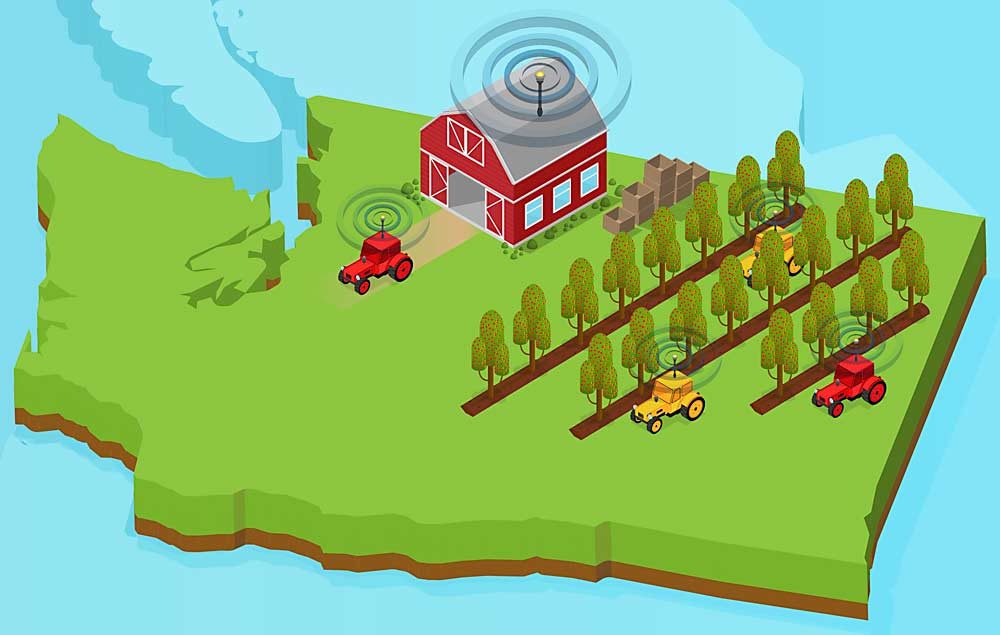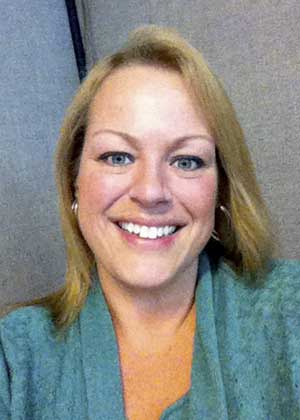
Autonomous vehicles are allowed in Washington orchards.
Karen Lewis, a Washington State University tree fruit extension specialist, wants to spread the word. But she wants growers to hear it from the source: the state Department of Labor and Industries.

“Yes, they are allowed,” said Teri Neely, the technical services safety program manager for the department’s Division of Occupational Safety and Health, the state agency that regulates and investigates workplace safety.
That clear answer is important to Lewis, because she’s encountered many growers who believe state regulations prevent autonomous vehicles on farms. On surveys, growers list improved tractors but rarely autonomous tractors among sought-after tools, said Lewis, one of the industry’s vocal champions for mechanization.
When she speaks to growers, they often act surprised and more interested when they learn autonomous vehicles are allowed. During a spring industry visit to the Netherlands, an autonomous tractor demonstration drew excited reactions from some of the growers on the trip.
“If you don’t know it’s available, you probably aren’t going to ask for it,” Lewis said.
The confusion goes beyond Washington.
When Good Fruit Grower made calls to state ag departments and workplace safety regulators in key fruit production states, a clear answer on the legal status of autonomous vehicles was hard to come by. Like Washington, Michigan, Pennsylvania, New York and Oregon lacked sections of administrative code specifically dealing with autonomous vehicles. But did that mean such tools were thus permitted by default? No one seemed to know for sure.
This confusion happens sometimes when technology or any advances in farming practices outpace regulations, said Mark O’Neill, communications director at the Pennsylvania Farm Bureau.
To stay on the safe side of unclear state regulations, someone rode in the autonomous tractor at a vineyard demo last summer in New York.
Tech hub California was the exception. Regulations technically allow autonomous implements, such as tractors, but strictly require a human operator to be either onboard or within 10 feet. That discourages most use, said Frank Polizzi, a spokesman for the California Department of Industrial Relations.
“In effect, it prohibits the use of most self-operating equipment because … the intention of most self-operating equipment is to have no human employees around,” Polizzi said in an email.
State regulators earlier this year denied a petition from the Association of Equipment Manufacturers to loosen those restrictions.
Several manufacturing companies are working on developing robotic pruners and harvesters, but Lewis suspects tractors used to mow or tote bins would be easier and more affordable automation arenas for growers to implement. There are also companies making and selling automated tractors or kits to automate existing ones, Lewis said.
She’s in the process of trying to convince a few manufacturers to hold demonstrations in Washington.
Another area ripe for automation: spraying, which would remove a human from hazards. Lav Khot, a biological systems professor at Washington State University, is working with manufacturers on that front, Lewis said.
Neely of Labor and Industries agreed about the misconception because the regulations never really spell it out. Most of the portion of the Washington Administrative Code dealing with agriculture safety was written before the days of automation.
That may change someday, but for now, incidents involving automated machinery on farms would be investigated on a case-by-case basis, she said. For example, if officials determined a lack of training contributed to an accident, they would use the training sections to mandate fixes or levy fines. If darkness contributed to the problem, they would pursue action under clauses that mandate adequate lighting. •
—by Ross Courtney






Leave A Comment